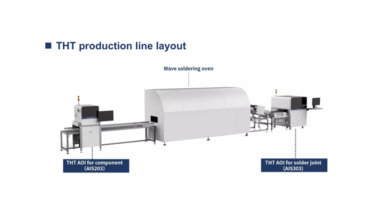Modernization of old HVAC systems with microchannel heat exchangers

Upgrading old HVAC systems with microchannel heat exchangers is a practical way to increase efficiency, reduce energy consumption and extend the service life of equipment without completely overhauling the system. Traditional installations, which often use bulky structures made of pipes and fins, can hardly cope with modern requirements for productivity and environmental friendliness. Microchannel technology, with its compact design and excellent heat dissipation, represents an attractive upgrade path. This text examines the process, advantages, and challenges of modernization, as well as provides practical recommendations to technicians and business leaders seeking to modernize aging systems https://www.kaltra.com/microchannel-condensers.
The appeal of microchannel heat exchangers lies in their design: flat tubes with tiny internal channels combined with grated fins increase the surface area for heat exchange while minimizing the volume of refrigerant. Compared to older copper or aluminum tubular fin heat exchangers, these heat exchangers are lighter, more efficient, and better suited for use with newer, environmentally friendly refrigerants such as R32 or R410A. For HVAC systems installed decades ago, retrofitting with a microchannel capacitor can reduce energy consumption by improving heat dissipation, especially in air conditioning or cooling systems. Lower refrigerant consumption is also consistent with stricter requirements for substances with high GWP (global warming potential).
Compatibility assessment and system preparation
Before proceeding with the upgrade, it is important to evaluate the existing air conditioning system. Not all older devices are suitable for integration with microchannels. First, check the dimensions of the condenser coil and the mounting points. Microchannel devices are typically thinner and lighter than their predecessors, which can simplify installation, but may require adapters or brackets to match the original dimensions. The airflow pattern is also important — old fans designed for tubular and ribbed coils may not provide the speed necessary for optimal operation of microchannels. It is recommended to measure the static pressure and air flow velocity in advance; if they prove insufficient, it may be necessary to upgrade the fan motor or blades.
Another obstacle is the compatibility of the refrigerant. Many legacy systems run on R22, which have been abandoned in favor of more environmentally friendly alternatives. Switching to a microchannel condenser often means replacing the refrigerant, which may include replacing seals, valves, or even the compressor if it cannot withstand higher pressures. For example, an R410A-equipped system may require an expansion valve designed for the appropriate pressure to avoid leaks or inefficiency. It is useful to familiarize yourself with the specifications of the heat exchanger manufacturer — in most cases, upgrade kits or recommendations are provided to facilitate the transition.
The preparation of the system includes more than just the replacement of parts. Cleaning the air ducts and the evaporator coil prevents debris from entering the shallow passages of the microchannels. Flushing the pipelines to remove old oil or dirt ensures that the new refrigerant will work properly. Skipping this step can lead to corrosion or clogging, which negates the benefits of upgrading. In one real-world case, the company reduced modernization costs by half by reusing existing pipelines after thorough cleaning, which proved the effectiveness of the preparation.
Advantages, challenges, and practical advice
The advantages of upgrading with microchannel heat exchangers are tangible. Energy efficiency is often increased by 10-20% due to better heat dissipation and reduced fan energy consumption. In a commercial building with an aging roof, this leads to lower utility bills and lower carbon dioxide emissions. Compact dimensions also free up space, which is an advantage in cramped production spaces. In addition, the aluminum construction of most microchannel devices resists corrosion better than copper, especially in humid or coastal areas, which ensures their long-term reliability.
However, problems arise. This is associated with high costs. Although prices for microchannel capacitors are competitive, labor costs and additional services (such as fan motors or refrigerant conversion) may exceed expectations. Another factor is the downtime during installation — enterprises may not be in a hurry to suspend work for modernization. To avoid this, schedule work for off-peak seasons, such as spring or autumn, for HVAC systems, and organize the process in such a way as to maintain partial operability.
It is recommended to test the upgraded system under load before shutting down. Run it at maximum power and monitor the pressure, temperature, and power consumption. This will eliminate inconsistencies such as insufficient condenser size or air flow imbalance before they become chronic. During one chiller upgrade in the 1990s, technicians discovered that the microchannel unit exceeded specifications after changing the fan speed, increasing cooling capacity by 5% compared to expectations.
It is also worth paying attention to durability. The microchannel design, despite its effectiveness, is sensitive to physical damage or clogging. Installing a safety grid or filter upstream can protect the fins from debris or hail, which is an inexpensive solution that extends service life. Regular maintenance, such as annual cleaning of the coil with a low-pressure washer, allows you to maintain high efficiency without the risk of channel failure.
Upgrading old HVAC systems with microchannel heat exchangers reduces the gap between outdated equipment and modern performance. This is not a plug-and-play solution – success depends on evaluating compatibility, careful preparation, and addressing issues such as costs or downtime. Nevertheless, with careful planning, modernization provides tangible gains in efficiency, sustainability, and durability. For business leaders or air conditioning specialists planning major repairs, this approach offers a middle ground: updating what already exists, rather than starting from scratch. The result is a system that works like new, without the need to completely replace the stickers.





